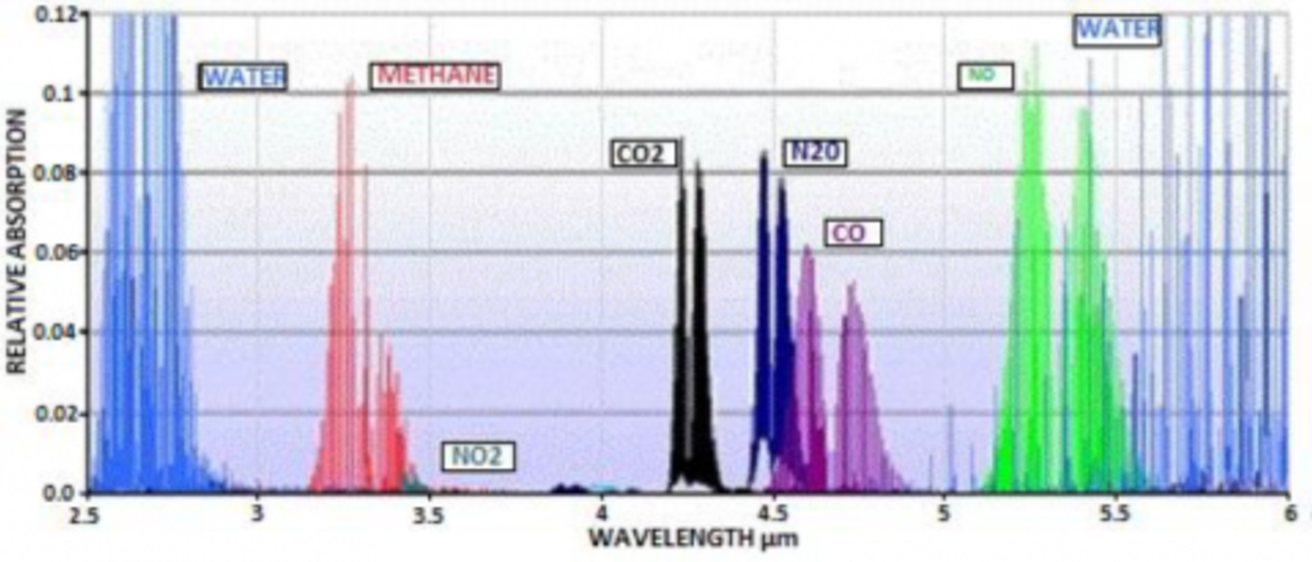Many molecules, from glucose to nitrate to carbon dioxide, have absorption resonances in the "mid-infrared" due to vibrational and rotational molecular transitions; in fact, this portion of the spectrum is often called the "optical fingerprint" region. The absorption resonances can be used to detect molecular species with good specificity and high sensitivity. Optical sensing of gases in the ambient / atmosphere has been very successful due to relatively sharp absorption resonances, and a relatively simple chemical environment. Optical sensing in aqueous or solid is more challenging because absorption resonances become broader, and chemical environments tend to be more complex with overlapping spectra. This field has come a long way with the invention of quantum and interband cascade lasers, and teh recent development of improved mid-infrared LEDs. These sources continue to be developed for higher irradiance and efficiencies, and lower thresholds. Research and development of mid-infrared vertical cavity surface emitting lasers (VCSELs) is a challenging new direction, in part because the distributed Bragg reflectors in the mid-infrared become very thick; but mid-infrared VCSELs promise to have higher spectral irradiance than LEDs, very low threshold, and can be fabricated in large, dense arrays because they are surface emitters. Another interesting research direction in optical sensing is the development of compact, mid-infrared frequency combs. Frequency combs are broadband pulsed lasers consisting of a series of equally and closely spaced frequency lines that are phase locked. A pair of slightly detuned frequency combs can be used as a compact spectrometer with no gratings or moving mirrors. A pair can also be used in 2D infrared spectroscopy, a powerful nonlinear technique that constructs a 2D frequency correlation spectrum that allows separating out molecular species with overlapping linear absorption spectra. Mid-infrared frequency combs have been around for some time in the form of large, ultrafast pulsed lasers, and so 2D infrared spectroscopy can currently only be done on large optical lab benches. But development of compact mid-infrared diode lasers forming frequency combs through Kerr nonlinearities is underway, and may enable compact optical chemical sensors with greater specificity, and greater resistance to interference from confounding molecular species.
